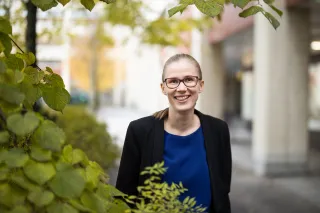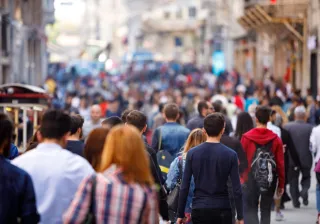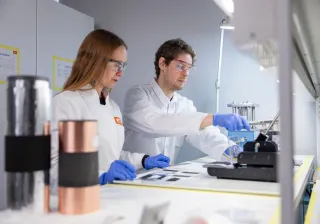VTT is building a tool for modelling urban circular economies. Scientists' ideas are being piloted in the district of Kera in Espoo, which is serving as a development laboratory for the city's circular economy.
– Cities consume 70 per cent of the world's resources and produce 70 per cent of all emissions. Cities are where we can make a real difference, says Research Scientist Satu Paiho from VTT.
Satu Paiho is coordinating a project called Circular City, which pools together researchers of different disciplines from across VTT to build competence, techniques and tools for modelling and designing a new generation of urban circular economies.
Among other things, Paiho's team is working on a system dynamics model of urban energy production, transport, food and water supply and raw material flows.
– We want to identify the most important interactions between these flows and build a tool for analysing different kinds of cities, Paiho explains.
It has long been known that mankind cannot rely on virgin natural resources forever and that instead we need to start using our resources more wisely. Circular economies are about keeping products, components and materials in economic circulation for as long as possible.
Holistic urban development
The project workshops have focused on the basics: the definition of the concept of a circular city. Paiho associates the idea of a futuristic circular city with words such as "holistic", "sustainable", "inclusive" and "responsible".
– The next generation of circular economies will completely eliminate many of the problems that we see today, such as emissions.
A holistic approach is one of the cornerstones of the project.
– Energy renovations, for example, often end up focusing on sub-optimisation. Adding insulation to buildings naturally helps to conserve energy but has little impact across the city unless the entire energy chain from production to consumption is adapted to the lower energy consumption of buildings, explains Paiho, who specialises in urban energy systems.
Urban material and service flows form a complex system, which the Circular City team is now striving to model. The first iteration of the system dynamics model is based on researchers from different fields working together.
– It helps us to understand interactions and identify the most important ones.
The scientists have also identified the most notable urban material flows that need to be put to more efficient use.
– The way in which we deal with waste is crucial. Biowaste, for example, can be gasified and used to provide district heating or to fuel NGVs. The rest can be turned into fertilisers, Paiho explains.

Latest circular economy innovations to be piloted in Kera, Espoo
The Circular City team is keen to start experimenting in a real urban environment. One area with good potential is a new residential development for 14,000 people in the district of Kera in Espoo. Kera will also become an international example of circular economy.
– Our latest meeting with VTT's researchers was yesterday, says Niina Nousjärvi, the City of Espoo's project manager for sustainable development.
Nousjärvi's thoughts on holistic urban development are in line with the views of VTT's scientists. Urban circular economy is about much more than sorting waste.
– A circular economy is both an economic model and a horizontal theme that covers, for example, planning and construction, energy solutions, housing, transport, logistics and urban production, Nousjärvi explains.
Once the Circular City model has been populated with default baseline data from Kera, the scientists will be able to build a range of scenarios and see what they would mean in practice. Some of the scenarios could be pretty outrageous.
– We could explore, for example, what would happen to the city's energy consumption, material flows and land use if the residents in Kera were to grow their own vegetables or produce all the energy they need locally, Satu Paiho says.
Cities at the forefront of circular economy development
The climate goals of cities are often more ambitious than international climate treaties or national targets. The City of Espoo, for example, has just announced ambitions to abandon coal by 2025 and be carbon-neutral by 2030.
– The City of Espoo has realised that the cities that will succeed in the future are those that are built on the principles of sustainable development. A sustainable approach also makes the most economic sense in the long term, Nousjärvi says.
The Circular City team's literature review reveals that finances are in fact one of the biggest obstacles to cities adopting a circular economy. Paiho explains that cities are put off by, among other things, the high cost of circular economy investments, even when future savings would be considerable.
– Another problem is the lack of a market for many recycled materials. Cities have traditionally been built using virgin materials, Paiho says.
On the other hand, there is huge business potential in circular economies.
– The data economy, for example, is a major opportunity. Urban circular economies need some kind of a data platform on which to build services, Paiho says.
The Kera district in Espoo will soon have such a data platform and its own 5G network.
– We are hoping that these innovations will make it easier to introduce more circular economy solutions in the area. We want Kera to become an international example of a digital urban platform for circular economy, Nousjärvi says.





